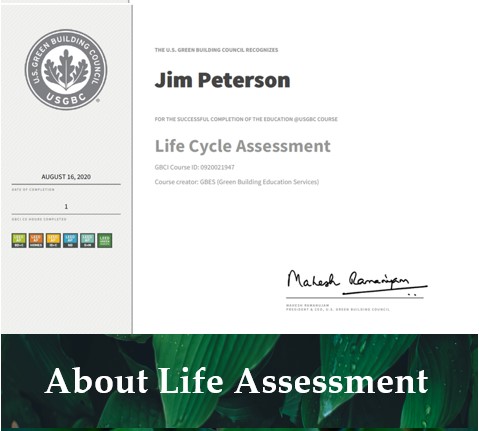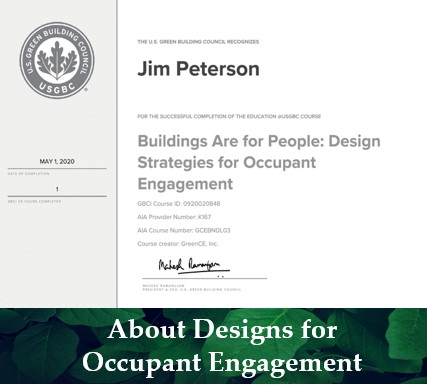

PROJECT DETAILS
Occupant engagement refers to how the ‘tenants’ or ‘occupants’ of a building responds to building systems and how it affects their behaviors. This means not only being aware of the many parts and systems that make your building function but being accountable for them as well. Your water use, energy use, and even the management of things you bring in and out of the structure as well as your waste disposal are all included in how you engage with your building. Designing for these interactions are the next part of this conversation.
Spaces that create an unbalance flow and stresses are more uncomfortable and less productive than spaces where occupants have spaces designed in an environmentally and functional manner. We know that people spend 90% of their time inside of a man-made structure. At 1stPOSS, we recognize that high-performing building, are not only measured by their utility and financial prominences, but by their degree of sustainability and their ability to maintain and enhance the comfort, health and productivity of those occupying the space, the tenant or Occupant.
Traditional design and architecture usually begin where do you want your bedroowm window to be, how many, and size of the kitchen countertop. These are the “typical’ or in the days past,that new homeowners would think. However, in today’s world with our changing climate, energy demands and resource depletions these things are on the list, but they are now taking on a different focus. The focus now is on how ‘sustainable’ it is! It’s not only where do you want that bedroom but what will be the best position for the bedroom so that we can position the bedroom window for the maximum use of sunlight.
And instead of just the size of the kitchen countertop, what is the most sustainable type of countertop that best suits our needs that we can afford. Answering these questions in the design process allows the architect & designer to help you meet those needs, but it allows you the ‘occupant’ the ability to better engage with the building.
Solutions We Provide
Today, designing strategies for occupant engagement centers around ‘building Green’ or being more sustainable. Planning for your green and energy efficient building, begins with minimizing energy use in all stages of your building’s life cycle, by integrating renewable and low-carbon technologies, installing energy needs, and maximizing the use of natural resources and efficiencies. This also means helping building users learn reuse, recycle and be more efficient as well. Planning for ways to bring fresh air inside, delivering good indoor air quality through ventilation. Occupant engagement results in a significant lowering of operational costs, an increase in marketability, longer functional life spans, which radically increase occupant productivity and well-being which has economically quantifiable benefits, all while sustaining the natural environment and protecting social values.
Green building continues to grow in popularity both for residential structures and corporate facilities. It’s clear that our surroundings have a major impact on our health as well. When we design building with the ‘intent’, regardless of how well intended it is, we must always measure the building real-world performance on the ground, upfront with the building occupants so that we can continue to improve the outcomes of our intentions. Making a more sustainable world, for people, planet our economic needs.
The benefits to occupants residing or working in green structures, can be seen in improvement in health, stress levels and overall quality of life. By installing and using sustainable systems, noticeable benefits are obtained in water efficiency, energy use and efficiency and a reduction of the strain placed on our natural resources.
